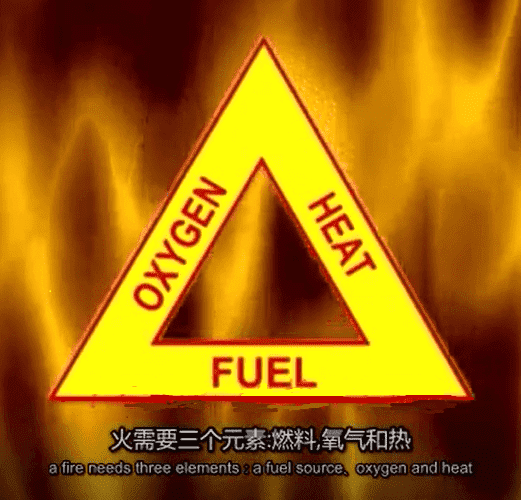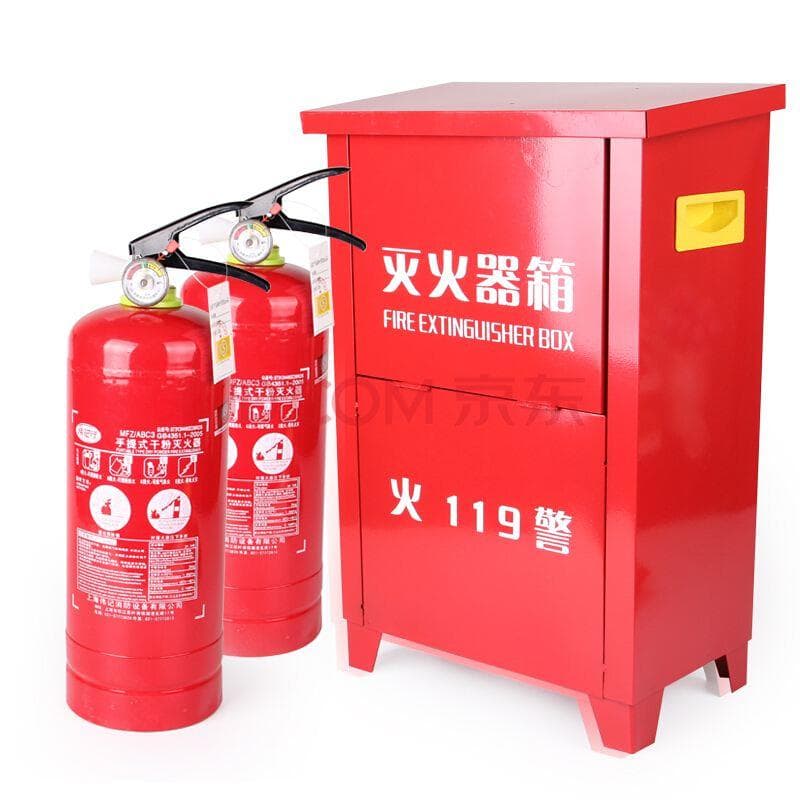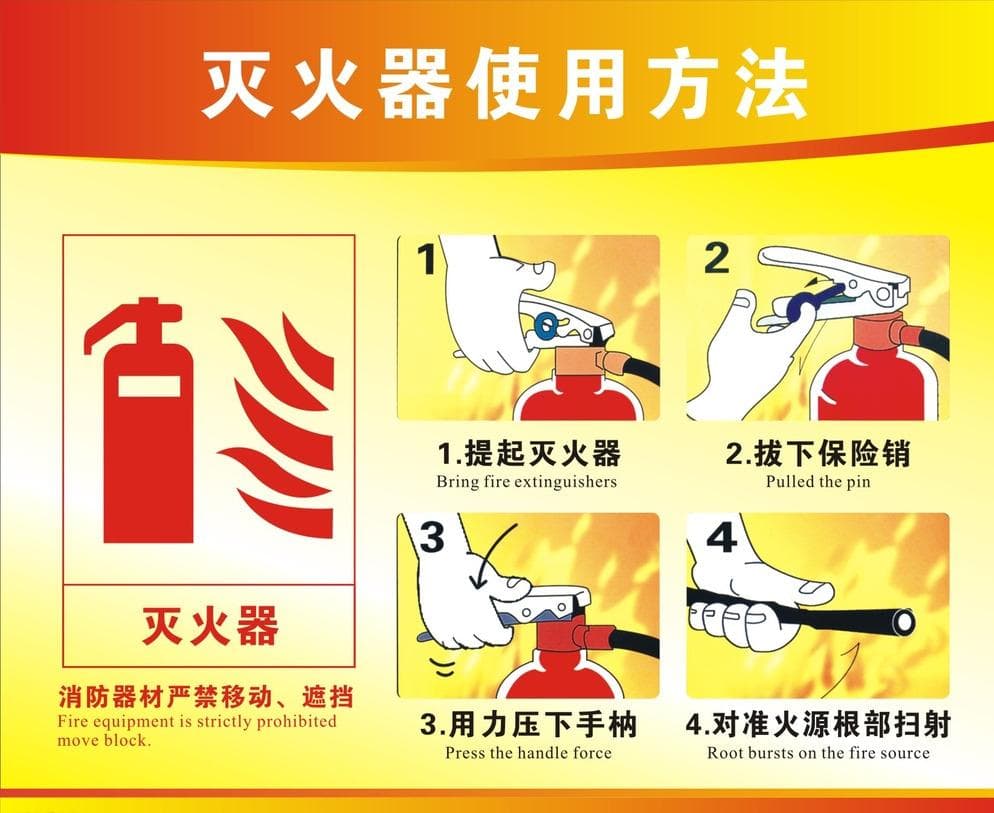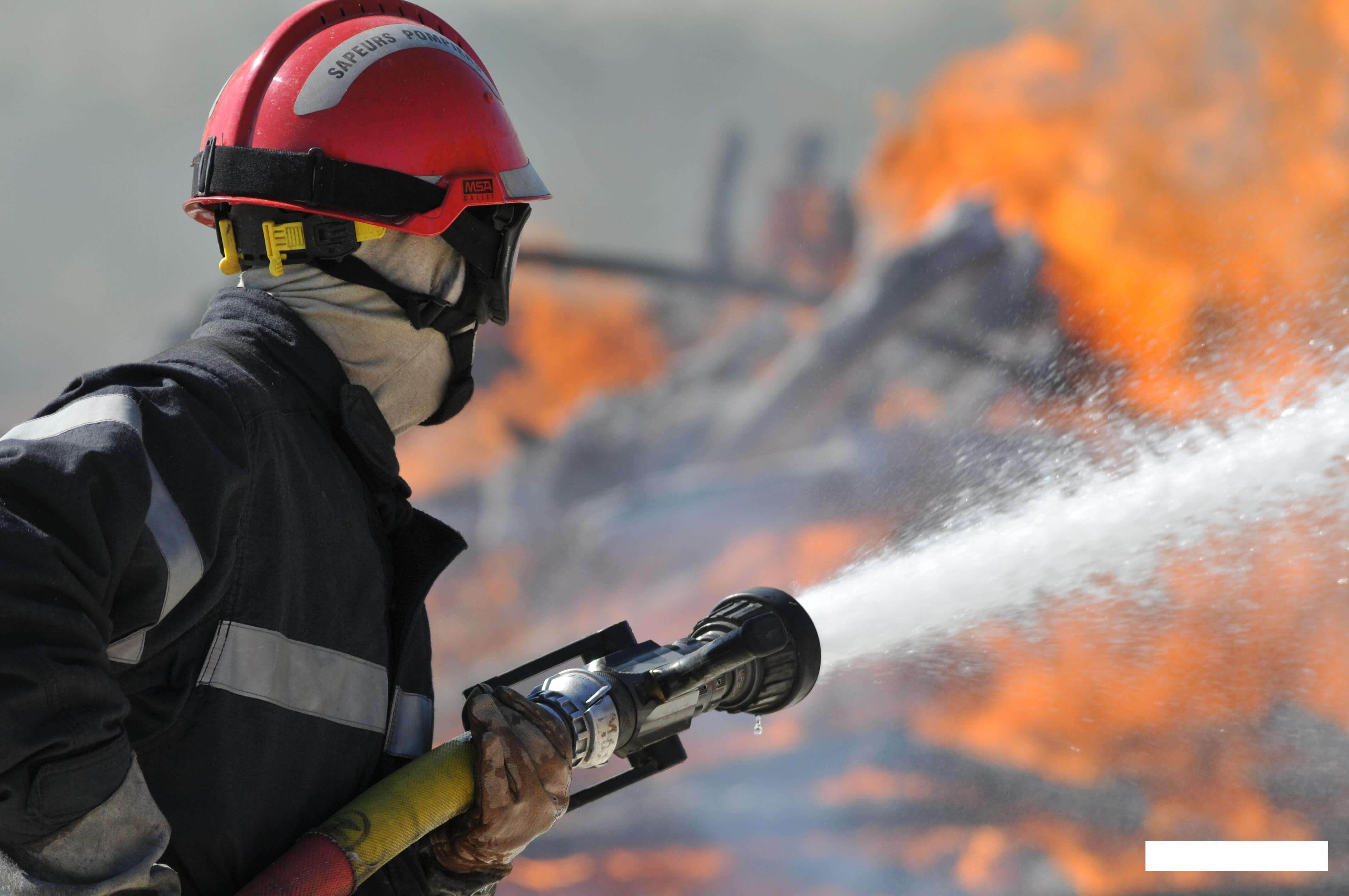Fire Extinguishers Fire Safety
A hazard that you can experience anywhere is fire. Understanding what causes fires can help you fight them. Here’s an example of a fire triangle: Oxygen, Heat, Fuel.

A fire needs three elements: A fuel source, oxygen and heat, removing one or more of these elements will cause the fire to go out. For example: a ball of paper, your fuel source, sitting on a desk with air all around it will do nothing, now if you add enough heat, the paper will combust.
Knowing the source of fuel or heat feeding a fire is very important. There are four main types of fires:
Class A for ordinary combustibles like wood or paper
Class B for flammable liquids like petroleum products and solvents
Class C for electrical fires
Class D for metals fires

Don’t assume that water is the best extinguisher for all fires, in the case of a Class B or C fire, using water to put out these types of fires could have dangerous results. For this reason, there are four categories of fire extinguishers. Each is designed for a different class of fire, but all are basically used the same way. You can find what classes of fire the extinguisher is meant to fight by looking the label on the outside of the fire extinguisher. Water types are only to be used on class A fires, while CO2 types can be used on A B or c fires. When encountering a fire, it is important that you are confident in your ability to put the fire out, and that you can fight the fire with your back toward an escape route.
Operating a fire extinguisher is very simple. An easy method to remember to fight fires is the PASS method.
P for pulling the pin,
A for aim at the base of the fire,
S squeeze the handle,
S for sweep the base of the fire.
Remember not to aim high at the flames, your spray should be concentrated at the base of the fire.

Fire extinguishers are intended for small fires. In fact, most extinguishers are only able to operate for small fires. In fact, most extinguishers are only able to operate for eight to ten seconds. If the fire is ever too large and has grown beyond its original confined space. Your escape path is threatened or if you are not sure if you have the correct type of fire extinguisher, abandon the fire and get everyone to safety. Other hazards of fires to consider are smoke and noxious fumes that could result in unconsciousness or death.

Fires can be prevented.
Keep your work areas clean and clutter-free.
Know how to handle and store the chemicals you work with.
Familiarize yourself with an emergency action plan for fires at work as well as home.










